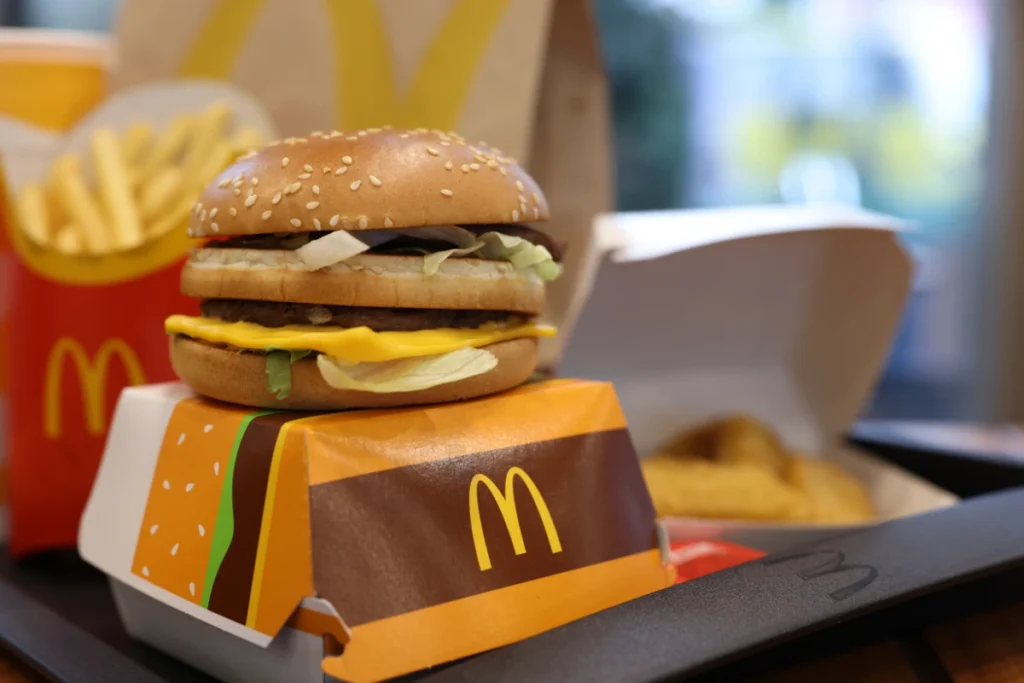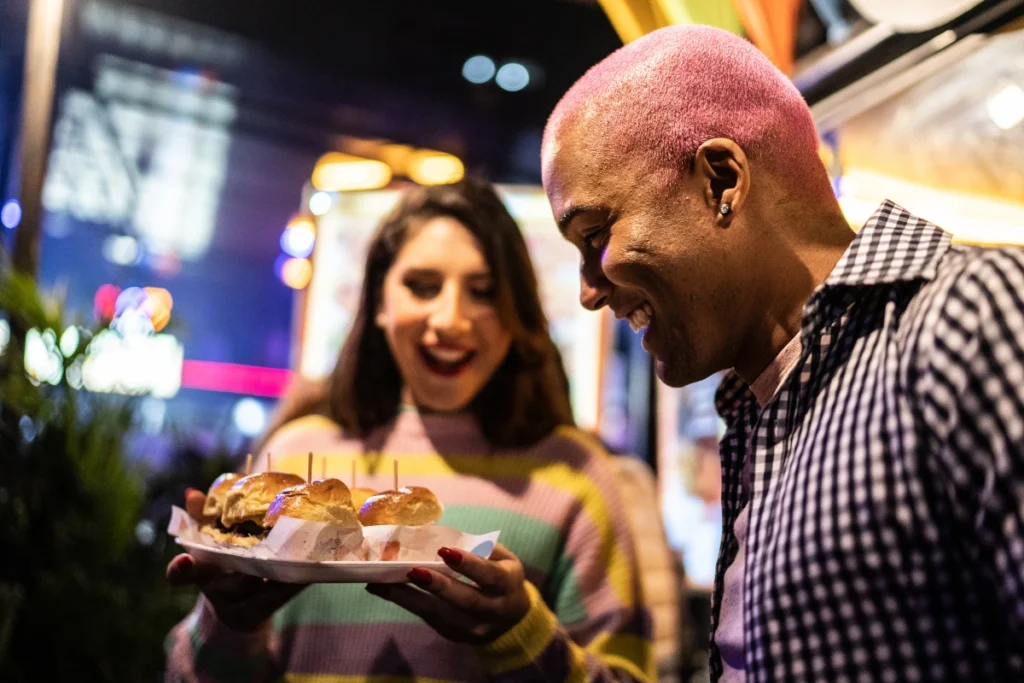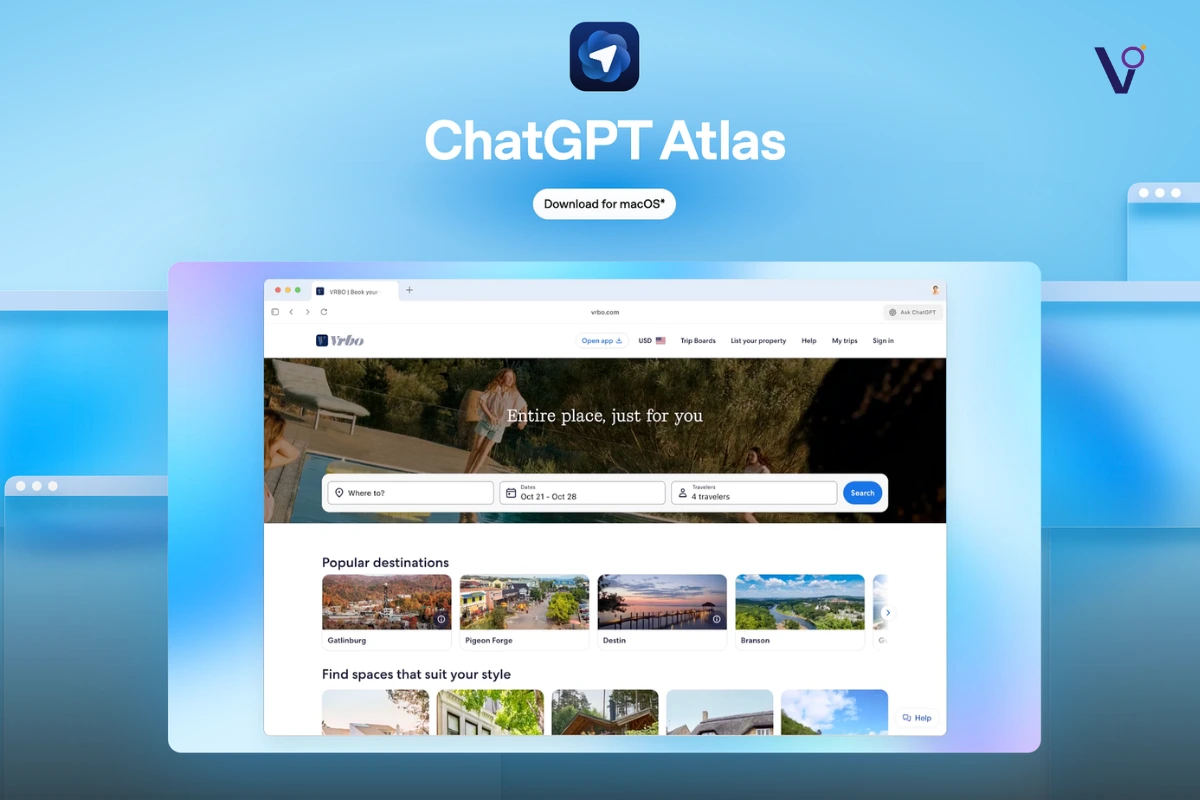McDonald’s marketing strategy is not only about being a fast-food behemoth but also about being a marketing giant. With effective sales strategies and psychological marketing strategies, McDonald’s rakes in millions of extra revenue each year. One of their best tricks? Cross-selling is a low-maintenance but high-yielding method that brings millions to their bottom line.
The Power of Six Words: “Would You Like Fries With That?”
McDonald’s understands that most people don’t go just for a burger—their customers usually want the whole meal. So, they teach employees to ask, “Would you like fries with that?” This one question, asked thousands of times every day, generates millions in extra sales.

McDonald’s has also perfected upselling, another McDonald’s marketing strategy. When a customer purchases a meal, the cashier usually asks, “Would you like to make it large?” This subtle question invites customers to spend more, generating revenue with ease. Indeed, McDonald’s collects an estimated $28 million every year from this simple cross-selling question.
McDonald’s Marketing Strategy: Scent Marketing
McDonald’s knows that branding is not merely logos and colors—it’s about experiences. In one promotion, they installed billboards that had no logos or words but carried the aroma of burgers and fries. The familiar smell was enough to induce McDonald’s hunger in people passing by, and sales in nearby stores skyrocketed. This groundbreaking sensory marketing method shows how powerful odors are in increasing sales.
What Small Businesses Can Learn from McDonald’s Marketing Strategy
One of the biggest differences between corporate giants such as McDonald’s and small businesses is marketing experience. Corporate giants have enormous budgets to spend on the best marketers who know how consumers behave. Small businesses, on the other hand, lack the time, skills, and money to appropriately apply these techniques.
But the good news is that you don’t have to break the bank to implement McDonald’s marketing tricks in your business. What follows are five mind games McDonald’s plays to get people to spend their money—tricks you can use in your own restaurant or small business today.
1. The Power of Miller’s Law in Menu Design
McDonald’s displays around 7-10 menu items at a time. This is no accident. McDonald’s follows Miller’s Law, which states that the human brain can only retain 7 ± 2 items in short-term memory.
Having too many menu options can overwhelm customers, leading to decision paralysis—when customers struggle to choose and may not order at all. On the other hand, too few options can limit sales potential.
How to Implement This in Your Business:
- Review your menu. If you offer too many options, consolidate your offerings and concentrate on your most lucrative dishes.
- If you offer too few options, add thoughtfully. Roll out new items slowly to build diversity without overwhelming the customer.
- Guide customers through 7-9 key items to facilitate easier decision-making.
2. The Novelty Effect: Keeping Customers Engaged
There are two types of McDonald’s consumers:
- Regular buyers – Individuals who always order the same meal (such as the traditional Big Mac enthusiasts).
- Novelty seekers – Consumers who are looking for new experiences and enjoy sampling limited-time items.
McDonald’s keeps the latter group interested by launching limited-time offerings and celebrity partnerships. Examples include:
- The Travis Scott Meal, which instantly sold out.
- The BTS Meal, which drew millions of K-pop fans globally.
- Seasonal menu items and premium burgers to generate buzz.
How to Apply This to Your Business:
- Offer seasonal or limited-time promotions to attract new customers.
- Partner with regional influencers or companies to create specialty items.
- Market new products strategically, making them stand out.
3. Cross-Selling & Upselling: The Ultimate Profit Boosters
McDonald’s staff don’t merely take orders—they drive sales with subtle asks:
- “Would you like fries with that?” → Cross-selling (selling a complementary product).
- “Would you like to make it large?” → Upselling (getting customers to purchase a larger size or higher-priced item).
This is effective because customers are more likely to purchase extra items that go along with what they were initially buying.
How You Can Apply This:
- Train employees to offer add-ons. For instance, if you own a coffee business, have baristas ask, “Would you like a croissant with your coffee?”
- Provide bundle offers. Combine best-selling items in a package at a reduced price to promote higher sales.
- Identify seasonal selling opportunities. On a sweltering summer afternoon, instruct staff to recommend a large cold beverage when a customer buys a burger.
4. The Left-Digit Pricing Effect: Why 9 is a Magic Number
Ever notice how McDonald’s prices seem to end with .99? That’s rooted in the left-digit effect, a psychological game where consumers are programmed to feel like $2.99 is way cheaper than $3.00—even when the difference is only a cent.
It turns out people love products ending in 9. In a 2003 University of Chicago study, products that sold for $39 did better than ones that went for $34 or $44—demonstrating how much people gravitate toward the “9.”
How to Use This in Your Business:
- Review your pricing policy. Round down prices to .99 (e.g., reduce $10 to $9.99).
- Experiment with varying price points. Try modest price adjustments to find out what drives sales.
- Apply psychological pricing carefully. Small price adjustments can translate into enormous revenue gains.
5. The Bargain Mentality: Getting Customers to Feel Like Winners

Humans enjoy feeling that they’ve obtained a good bargain, even when the actual savings are minimal. McDonald’s capitalizes on this by providing:
- Coupons and discounts (limited-time deals, buy one, get one free, etc.).
- Value menus that allow customers to feel they’re getting more for their money.
- Bundle deals that create the illusion of additional savings.
How to Use This in Your Business:
- Provide limited-time coupons. For instance, a 10% discount for first-time buyers.
- Bundle values. If you have a restaurant, package a burger and a beverage for a lower combined price.
- Price strategically. Let customers feel special about the bargain.
Final Thoughts: Use McDonald’s Tricks to Skyrocket Your Business
McDonald’s isn’t satisfied with letting good food sell itself—instead, it employs psychological tricks to keep you coming back. These five methods—menu optimization, novelty, cross-selling, psychological pricing, and bargain psychology—are easy and effective strategies you can implement in your own business.
McDonald’s focuses on product innovation and customer satisfaction, constantly evolving its menu to match changing consumer preferences while ensuring a broad appeal through diverse food and beverage offerings.
McDonald’s fosters brand loyalty through emotional connections, such as MyMcDonald’s Rewards, encouraging repeat visits by offering incentives and personalized customer experiences.
McDonald’s dominates the fast-food industry with its vast global presence, strong brand recognition, and ability to influence market trends through innovative marketing and menu adaptations.



